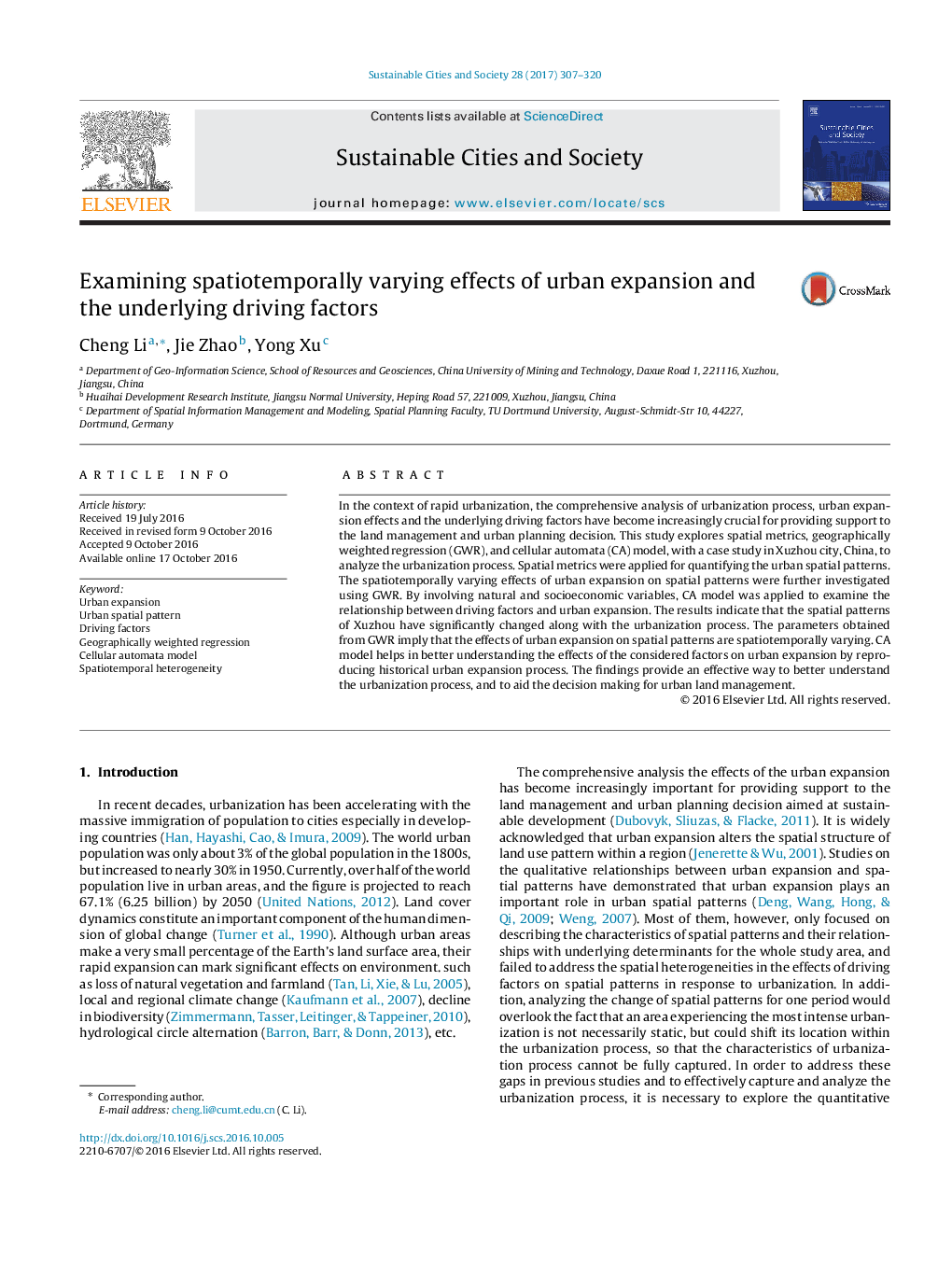| Article ID | Journal | Published Year | Pages | File Type |
|---|---|---|---|---|
| 4928238 | Sustainable Cities and Society | 2017 | 14 Pages |
Abstract
In the context of rapid urbanization, the comprehensive analysis of urbanization process, urban expansion effects and the underlying driving factors have become increasingly crucial for providing support to the land management and urban planning decision. This study explores spatial metrics, geographically weighted regression (GWR), and cellular automata (CA) model, with a case study in Xuzhou city, China, to analyze the urbanization process. Spatial metrics were applied for quantifying the urban spatial patterns. The spatiotemporally varying effects of urban expansion on spatial patterns were further investigated using GWR. By involving natural and socioeconomic variables, CA model was applied to examine the relationship between driving factors and urban expansion. The results indicate that the spatial patterns of Xuzhou have significantly changed along with the urbanization process. The parameters obtained from GWR imply that the effects of urban expansion on spatial patterns are spatiotemporally varying. CA model helps in better understanding the effects of the considered factors on urban expansion by reproducing historical urban expansion process. The findings provide an effective way to better understand the urbanization process, and to aid the decision making for urban land management.
Keywords
Related Topics
Physical Sciences and Engineering
Energy
Renewable Energy, Sustainability and the Environment
Authors
Cheng Li, Jie Zhao, Yong Xu,
